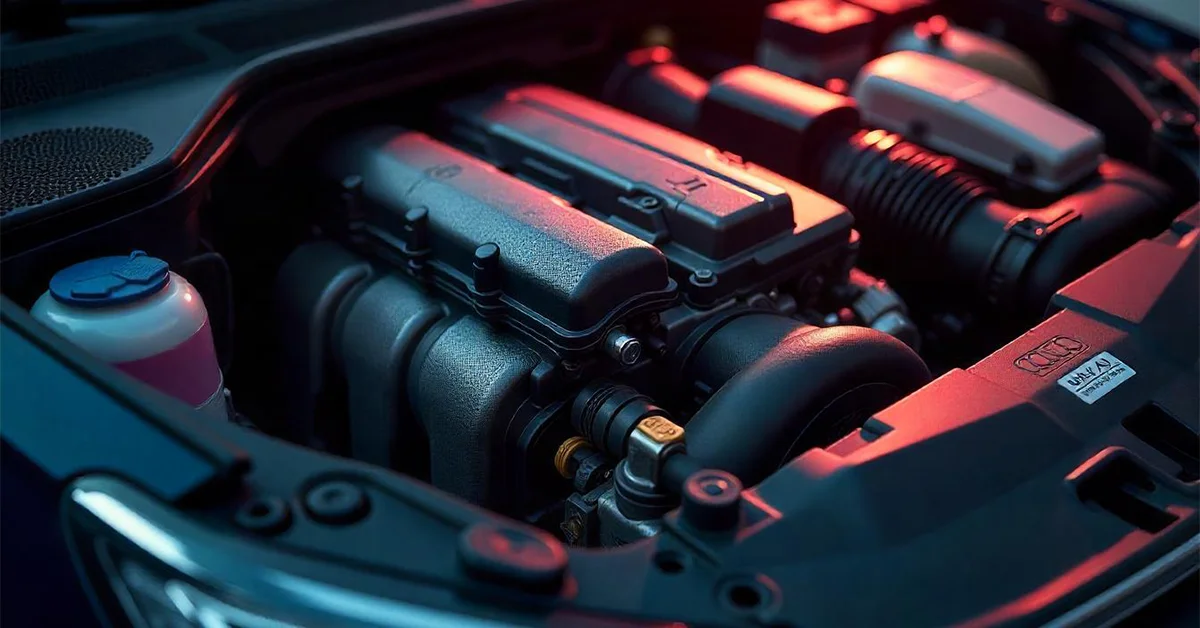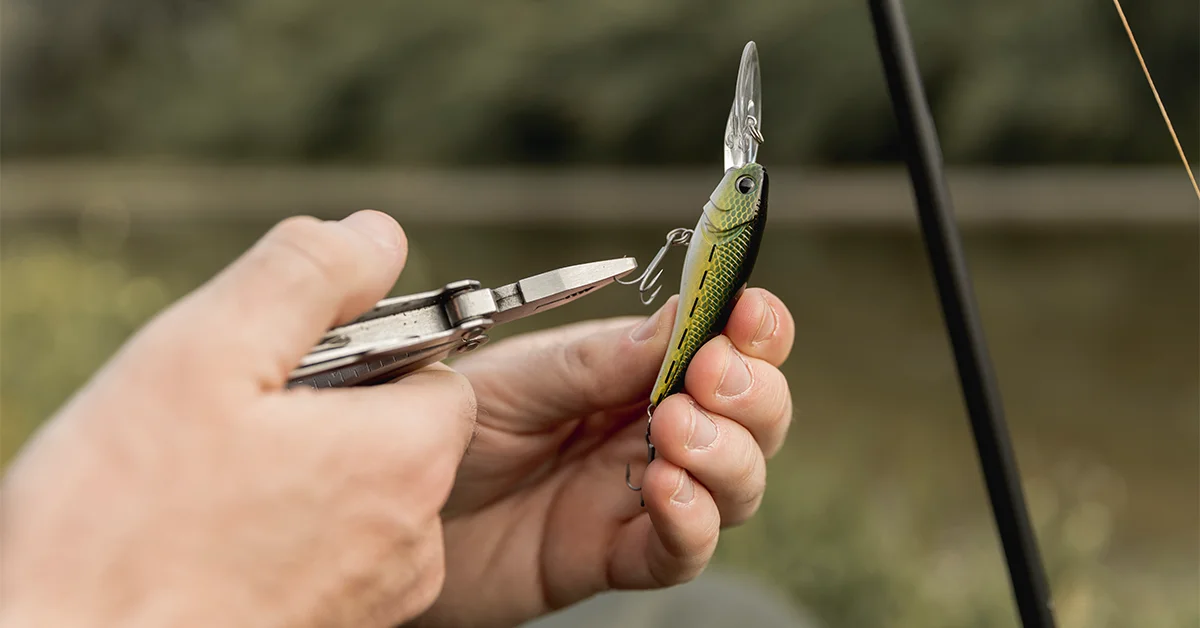BLOG
A Beginner Guide To Audi 5 Cylinder 10V Turbo Valve Shims

If you’re a fan of Audi’s legendary 5-cylinder engines, especially the 10-valve turbo models, you’ve probably heard about valve shims. For newcomers or even casual enthusiasts, valve shims might seem like a mysterious part tucked away inside the engine. However, understanding what Audi 5 Cylinder 10V turbo valve shims are, how they work, and why they matter can save you headaches and keep your engine running smoothly.
In this beginner’s guide, we’ll break down everything you need to know about Audi 5 Cylinder 10V turbo valve shims—from what they are, how they affect engine performance, to the maintenance involved. Whether you’re a DIY mechanic, a curious car enthusiast, or just want to learn more about your Audi, this article has you covered.
TRENDING
MyGreenBucks Kenneth Jones Green Finance Revolution
What Are Valve Shims In The Audi 5 Cylinder 10V Turbo Valve Shims?
Valve shims are small, precisely machined metal discs that control the clearance between the valve stem and the camshaft in an engine’s valvetrain. Specifically, in the Audi 5 Cylinder 10V Turbo Valve Shims engines—like those found in the classic Audi Quattro and early TT models—these shims are crucial for maintaining the correct valve lash, or gap.
Why is this clearance so important? When the camshaft rotates, it pushes the valves open and closed. If the clearance is too tight, valves may not fully close, leading to poor compression and engine damage. If it’s too loose, you get noisy operation and less efficient valve timing. Valve shims allow precise adjustment of this gap to ensure optimal engine performance and longevity.
The Role Of Valve Shims In The Audi 5 Cylinder 10V Turbo Valve Shims
The 5-cylinder 10-valve turbo engine is known for its unique design and powerful output. Valve shims here serve several critical roles:
- Maintaining Valve Clearance: Over time, valves and cam lobes wear, altering the clearance. Shims help restore this clearance to factory specifications.
- Reducing Engine Noise: Proper valve clearance keeps valve operation quiet. Improper clearance can cause tapping or ticking noises.
- Protecting Engine Components: Correct valve lash ensures valves close fully, maintaining compression and preventing damage to pistons and valves.
- Optimizing Performance: A well-adjusted valvetrain improves fuel efficiency, power output, and overall engine smoothness.
How To Know When Valve Shims Need Adjustment Or Replacement
If you own or work on an Audi with a Audi 5 Cylinder 10V Turbo Valve Shims engine, it’s important to monitor valve shims. Here are signs indicating shim maintenance is needed:
- Increased Ticking Noise: A loud tapping sound from the top of the engine often points to excessive valve clearance.
- Reduced Engine Performance: If your Audi feels sluggish or less responsive, valve lash might be off.
- Poor Fuel Efficiency: Incorrect valve timing due to clearance issues can waste fuel.
- Regular Maintenance Schedule: Audi recommends checking valve clearances roughly every 40,000 to 60,000 miles, but this varies based on use.
How Valve Shims Are Adjusted Or Replaced
Adjusting valve shims on an Audi 5 Cylinder 10V Turbo Valve Shims requires some mechanical skill but is manageable with the right tools and guidance.
The Process in a Nutshell:
Remove the Valve Cover: Access the camshaft and valves by removing the valve cover.
Rotate the Engine: Position each valve at the correct point where it can be measured.
Measure Valve Clearance: Using a feeler gauge, check the gap between the valve stem and cam lobe.
Determine Shim Thickness: Based on measurement, decide if the shim needs to be thinner or thicker.
Swap or Adjust Shims: Remove the old shim and replace it with a new one of the correct thickness.
Reassemble and Test: Put everything back, start the engine, and listen for smooth operation.
Note: Valve shims come in small increments of thickness, often in the range of 1.8mm to 3.5mm, and even a 0.05mm difference can impact performance.
Why Valve Shim Maintenance Matters For Turbo Engines
Turbocharged engines like the Audi 5 Cylinder 10V Turbo Valve Shims place more stress on components due to higher combustion pressures and temperatures. Valve shims play an even more critical role here.
- Prevent Valve Damage: Turbo boost increases cylinder pressure, so any valve leakage due to poor shim clearance risks damage.
- Ensure Turbo Efficiency: Valve timing affects how well the turbocharger performs. Precise valve lash ensures optimal airflow and boost delivery.
- Longevity: Regular shim adjustment extends the life of your turbo engine by maintaining healthy valvetrain operation.
Tips For Audi 5 Cylinder 10V Turbo Valve Shims Care
Use Quality Parts: Always source OEM or high-quality valve shims designed for your specific Audi model.
Keep Tools Ready: Feel gauges, micrometers, and the correct socket sizes will make your job easier.
Work Clean: Contamination inside the valvetrain can cause premature wear.
Take Notes: Record measurements and shim sizes for future maintenance.
Consult a Manual: Factory service manuals offer detailed specs and step-by-step instructions.
Common Misconceptions About Valve Shims
- Valve shims are set and forget parts: Actually, they require periodic inspection.
- All valve shims are the same: They vary by engine type, thickness, and material.
- Only professionals can adjust shims: While complex, many DIYers can handle the job with patience and proper instructions.
- Valve shims don’t impact engine noise: Incorrect clearance is often the first cause of valvetrain ticking.
Conclusion
Valve shims in the Audi 5 Cylinder 10V Turbo Valve Shims turbo engine might be small components, but they’re essential to your car’s health and performance. Understanding what they do, recognizing when they need attention, and knowing how to maintain them can save you costly repairs and keep your Audi running like the powerhouse it’s designed to be.
Whether you’re maintaining a classic Audi Quattro or a turbocharged TT, taking care of your valve shims ensures smooth, reliable engine operation for years to come.
FAQs
What is an Audi Audi 5 Cylinder 10V Turbo Valve Shims?
An Audi 5 Cylinder 10V Turbo Valve Shims is a small metal disc used to adjust the clearance between the camshaft and valve stem in the engine, ensuring proper valve operation.
How often should valve shims be checked or replaced on these engines?
Typically, valve clearance should be checked every 40,000 to 60,000 miles, but this depends on driving habits and engine condition.
Can I replace valve shims myself?
Yes, with proper tools, a service manual, and patience, many DIY enthusiasts can replace valve shims. However, it requires precision and care.
What happens if valve shims are not adjusted properly?
Incorrect shim clearance can lead to engine noise, reduced performance, fuel inefficiency, and potentially severe engine damage.
Do valve shims affect turbocharger performance?
Indirectly, yes. Valve shims ensure proper valve timing and sealing, which supports optimal airflow and boost pressure from the turbocharger.
ALSO READ: Discover Seamless Connectivity With WeblinkFusion.com
BLOG
Why Lvliangliangwudifangfeng Is Gaining Natural Health Buzz

In recent years, there’s been a huge shift toward embracing traditional and natural remedies. People everywhere are searching for alternatives to synthetic medications and are diving deep into ancient herbs and natural healing ingredients. One name that keeps popping up in conversations is Lvliangliangwudifangfeng — a tongue-twister at first glance, but a powerhouse when it comes to potential health benefits.
So why is Lvliangliangwudifangfeng suddenly making waves in the natural health world? Is it just a trend, or does it really offer something special for your wellness journey? In this article, we’re going to break it all down, explore what this herb is, what it’s used for, and why it’s creating such a buzz.
TRENDING
Phase 1 Environmental Site Assessment Cost Explained
What Is Lvliangliangwudifangfeng?
Let’s start with the basics. Lvliangliangwudifangfeng is a natural herbal formulation rooted in traditional Chinese medicine (TCM). It combines multiple ingredients, with one of the primary ones being Fangfeng — an herb that has been used for centuries in Asia for its anti-inflammatory and immune-boosting properties.
The full name, Lvliangliangwudifangfeng, refers to a unique preparation or formula originating from the Lvliang region of China. It’s part of a broader push in China and beyond to rediscover and elevate lesser-known herbal combinations that can support the body’s natural defenses and promote holistic well-being.
Why Natural Health Enthusiasts Are Paying Attention
Let’s face it: the world is more health-conscious than ever. From boosting the immune system to relieving chronic stress, people are leaning toward natural options — and Lvliangliangwudifangfeng fits right into that picture.
Here are some reasons why it’s gaining popularity:
Immune System Support
One of the standout benefits associated with Lvliangliangwudifangfeng is its potential to boost the immune system. The herb Fangfeng is known to help ward off colds, infections, and other common illnesses. Many users report fewer sick days and quicker recovery after incorporating it into their routines.
Anti-Inflammatory Properties
Chronic inflammation is linked to a wide range of diseases, from arthritis to heart conditions. This herbal mix is believed to help reduce inflammation in the body naturally — making it appealing to people looking to manage symptoms without resorting to harsh medications.
Adaptogenic Qualities
Some components in Lvliangliangwudifangfeng may have adaptogenic effects, meaning they help the body adapt to stress. Whether it’s work-related anxiety or emotional strain, this herb might support overall balance and resilience.
Traditional Wisdom Meets Modern Wellness
There’s something powerful about blending ancient herbal traditions with modern health trends. Many wellness seekers are drawn to remedies that have stood the test of time — and Lvliangliangwudifangfeng is a prime example.
A Deeper Look Into The Key Ingredients
Let’s zoom in on what makes this herbal formula tick.
Fangfeng (Saposhnikovia divaricata)
This is the main ingredient and has been used in TCM for treating wind-related ailments (like chills, headaches, and fevers). It’s also known for its detoxifying and pain-relieving effects.
Licorice Root
Often used to enhance the effects of other herbs, licorice root also brings soothing qualities to the mix — particularly for digestive issues and respiratory conditions.
Angelica Root
This root is prized in Chinese medicine for blood circulation and pain relief, especially in women’s health.
Cnidium
Used for its anti-inflammatory and antifungal effects, cnidium adds another layer of healing to the formulation.
Together, these ingredients work in harmony to promote health, vitality, and balance.
How To Use Lvliangliangwudifangfeng
You might be wondering, “How do I even take this?” Thankfully, Lvliangliangwudifangfeng is available in several user-friendly forms:
- Herbal teas (just steep and sip)
- Capsules or tablets (convenient for daily use)
- Powdered blends (to mix into smoothies or soups)
Most experts recommend consulting a TCM practitioner before starting any herbal treatment. This ensures the dosage is right for your specific needs and that there are no interactions with medications you may be taking.
Who Should Consider Taking It?
Lvliangliangwudifangfeng isn’t a miracle cure — but it could be an excellent addition for those seeking:
- Natural immune system support
- Relief from mild allergies or colds
- Better stress management
- A supplement to support traditional wellness routines
That said, it’s not ideal for everyone. Pregnant women, people with autoimmune diseases, or those on strong medication should consult with a professional before trying it.
Potential Side Effects And Safety Tips
As with any herbal product, safety is key. While Lvliangliangwudifangfeng is generally considered safe, some people may experience:
- Mild digestive discomfort
- Drowsiness (especially when taken in high doses)
- Allergic reactions (in rare cases)
Always start with a small dose to see how your body reacts. And remember — natural doesn’t always mean harmless. Being informed is your best defense.
The Rising Buzz On Social Media And Wellness Blogs
Type Lvliangliangwudifangfeng into TikTok, YouTube, or Reddit, and you’ll find hundreds of people sharing their experiences. From TCM experts breaking down the science, to influencers posting before-and-after wellness transformations, the internet is full of buzz.
While it’s great to see herbal medicine gaining traction, always verify sources and stay grounded in evidence-based research. Trends come and go — but solid health practices last forever.
Where To Buy Lvliangliangwudifangfeng
Interested in trying it? You’ll find Lvliangliangwudifangfeng online through herbal supplement retailers and specialty TCM shops. Look for:
- Certified organic ingredients
- Third-party lab testing
- Transparent labeling
Avoid shady marketplaces or products with unclear sourcing. Stick with reputable suppliers to ensure quality and authenticity.
Conclusion
Lvliangliangwudifangfeng isn’t just another herbal trend. It’s a fascinating blend of tradition, science, and wellness potential — and it’s carving out its place in the natural health movement for a reason.
If you’re exploring holistic ways to feel better, boost your immune system, and bring balance back into your life, this might be the herbal ally you’ve been looking for. Just remember: natural health is a journey, not a quick fix. Do your research, listen to your body, and when in doubt, consult a trusted expert.
FAQs
What is Lvliangliangwudifangfeng?
Lvliangliangwudifangfeng is a traditional Chinese herbal formulation primarily made with Fangfeng and other natural ingredients, believed to support immune health, reduce inflammation, and help the body adapt to stress.
Is Lvliangliangwudifangfeng safe to use daily?
Generally, yes — but always consult a healthcare provider or TCM practitioner before starting any new supplement, especially if you have pre-existing conditions or are on medication.
How do you take Lvliangliangwudifangfeng?
It’s commonly taken as a tea, capsule, or powdered blend. Dosage depends on your goals and health status, so it’s best to get professional advice.
Can Lvliangliangwudifangfeng help with stress?
Yes, many users report feeling more balanced and less anxious, thanks to the adaptogenic properties of the herbal ingredients.
Where can I buy authentic Lvliangliangwudifangfeng?
You can find it online through trusted TCM retailers and health stores. Look for organic certification and third-party lab testing for quality assurance.
ALSO READ: Unlocking Speed: The Prodrive Performance Pack Experience
BLOG
Hooked On Action: Mastering The Art Of Fishing With Jerkbait

There’s nothing quite like the thrill of feeling a tug on your line, your pulse quickening as a predator fish locks onto your bait. For anglers seeking an edge in the water, jerkbait fishing offers an exciting and effective method that blends skill, strategy, and instinct. If you’re hooked on action, then mastering the art of fishing with jerkbait could be your next game-changer.
Whether you’re new to or looking to fine-tune your technique, this guide will walk you through everything you need to know—from types and setups to tactics and seasonal strategies. Let’s dive into the journey that has captivated anglers worldwide.\
TRENDING
Inside The Candid Forum: Real Talk, Real Voices
What Is Jerkbait Fishing?
Jerkbait fishing is a technique that involves using a type of lure known as—a hard-bodied lure designed to mimic injured baitfish. The angler imparts a jerking motion with the rod to make the lure dart erratically through the water. This movement triggers a predatory response in fish like bass, walleye, and pike.
The appeal of lies in their versatility and effectiveness. Unlike crankbaits or spinnerbaits, which rely on consistent motion, shine when paused, mimicking a wounded prey that’s easy to ambush.
Why Choose Jerkbait?
If you’re wondering why so many pros and hobbyists are hooked on jerkbait fishing, here’s why:
- Versatile action: You can fish them fast, slow, shallow, or deep.
- All-season effectiveness: Especially productive during cooler months.
- Lifelike appearance: With 3D eyes, rattles, and realistic finishes, they closely imitate baitfish.
- Deadly pause: The ability to suspend or slowly rise/sink during pauses draws out hesitant fish.
Types Of Jerkbaits
There are three main types of to consider when building your tackle box:
Floating Jerkbaits
These rise to the surface when paused. They are ideal for shallow waters or when fish are feeding closer to the surface.
Suspending Jerkbaits
Perhaps the most popular, these lures stay in place during the pause, making them perfect for enticing fish during colder months when predators are lethargic.
Sinking Jerkbaits
Designed for deeper water, these descend during the pause and can be used to target fish near the bottom or in drop-offs.
Choosing The Right Setup
To get the most out of your fishing experience, your gear should complement the technique.
Rod
A medium or medium-light power rod with a fast or extra-fast action is ideal. Lengths between 6’6” and 7’0” allow for good control and distance without sacrificing precision.
Reel
A baitcasting reel is great for experienced anglers, while spinning reels work well for beginners. Look for a reel with a decent gear ratio (6.3:1 or faster) to keep up with aggressive retrieves.
Line
Fluorocarbon is preferred due to its low visibility and sensitivity. Line weights between 8 to 12 lbs are typical, though some anglers opt for braided lines with a fluorocarbon leader for added strength.
Mastering The Retrieve
The heart of jerkbait fishing is in the retrieve. Mastering this rhythm is what separates casual casters from seasoned pros.
The Classic Jerk-Pause
- Cast your and let it settle.
- Use short, sharp jerks of your rod to make the bait dart.
- Pause between jerks (1–5 seconds depending on conditions).
- Watch the line closely—many strikes occur during the pause.
Speed Adjustments
- Cold water (40–55°F): Slow, with longer pauses.
- Moderate water (55–70°F): Balanced retrieve with occasional pauses.
- Warm water (70°F+): Faster retrieves to match active fish behavior.
Jerk Direction
Keep the rod tip down or to the side to maintain control. Downward jerks are common for shallower waters, while sideways jerks help avoid surface drag.
Seasonal Jerkbait Strategies
Understanding when and how to use seasonally can skyrocket your success rate.
Spring
Fish are coming out of winter and are hungry. Use suspending in shallow coves and transition zones.
Summer
This is when jerkbaits take a backseat—but don’t write them off. Try deeper-diving jerkbaits along ledges or drop-offs during early mornings and cloudy days.
Fall
As baitfish school up and predators feed aggressively, jerkbaits can dominate. Work them quickly and erratically to mimic panicked prey.
Winter
This is when jerkbaits shine. The suspending variety, worked slowly with long pauses, is deadly for lethargic bass and other gamefish.
Color Selection Tips
Color can make or break your presentation. Here’s a guide to get it right:
- Clear water: Use natural colors like silver, shad, or ghost patterns.
- Stained water: Go with chartreuse, gold, or brighter hues.
- Low light: Darker colors like black or blue offer better silhouettes.
Don’t be afraid to experiment. Sometimes a flashy or unexpected color triggers aggressive bites.
Common Mistakes To Avoid
Jerking too aggressively: Overdoing it can spook fish. Aim for controlled movements.
Neglecting the pause: Many anglers rush the pause, missing strikes.
Wrong line type: Using monofilament can reduce sensitivity and affect sink rates.
Not tuning the bait: Ensure your bait runs true by adjusting the eyelet with pliers if it veers to one side.
Poor hook maintenance: Sharp hooks are essential. Replace or sharpen them regularly.
Advanced Tips For Success
- Use a loop knot: Allows the bait to move more freely and naturally.
- Add suspend dots or strips: Customize buoyancy for finicky fish.
- Mix up the cadence: 2 jerks and a pause, 3 jerks and a longer pause—fish differently until you find what works.
- Pay attention to weather: Cloudy days and light wind often make for the best jerkbait conditions.
Conclusion
Jerkbait fishing is not just a technique—it’s an art form. The interplay between motion and stillness, the patience in the pause, and the thrill of a sudden strike make this method truly addictive. If you’re hooked on action, then investing time into mastering the art of fishing with jerkbait is well worth it.
Whether you’re chasing trophy bass or simply want to become a more versatile angler, jerkbaits deserve a permanent spot in your tackle box. So grab your gear, hit the water, and let the dance of the jerkbait begin.
FAQs
What is jerkbait fishing?
Jerkbait fishing is a technique using lures that mimic injured baitfish. Anglers jerk the rod to make the bait dart and pause, triggering predatory fish to strike.
When is the best time to use a jerkbait?
Jerkbaits are effective year-round but particularly excel in cooler months like fall and winter when fish are more sluggish and respond well to a paused presentation.
What type of rod is best for jerkbait fishing?
A medium or medium-light power rod with fast action around 6’6″ to 7’0″ in length offers the best control and sensitivity for jerkbait retrieves.
How do I know if a fish strikes during the pause?
Watch your line closely for twitches or sudden movement during the pause. Many strikes happen then, and sometimes the fish just load the rod without a visible bite.
Should I use a floating, suspending, or sinking jerkbait?
Choose based on water depth and conditions. Floating is for shallow, suspending for mid-depths and cold water, and sinking for deeper targets or fast-moving rivers.
ALSO READ: Phase 1 Environmental Site Assessment Cost Explained
BLOG
Phase 1 Environmental Site Assessment Cost Explained

When buying, selling, or developing real estate, one critical step often overlooked by many is conducting a Phase 1 Environmental Site Assessment Cost (ESA). Understanding the cost of this assessment is crucial because it can significantly impact your budget and project timeline. Whether you’re a homeowner, commercial developer, or investor, knowing what goes into the Phase 1 ESA cost will help you make informed decisions and avoid unexpected surprises. In this article, we’ll break down everything you need to know about Phase 1 Environmental Site Assessment Cost in a clear, straightforward way.
TRENDING
Stay Cool And Stylish: The Rise Of Sweat Resistant Bolo Ties
What Is A Phase 1 Environmental Site Assessment Cost?
Before diving into the Phase 1 Environmental Site Assessment Cost, it’s important to understand what a Phase 1 Environmental Site Assessment Cost actually is. A Phase 1 ESA is an investigation conducted by an environmental professional to identify potential or existing environmental contamination liabilities on a property. This process involves reviewing historical records, inspecting the site, and interviewing people knowledgeable about the property. The goal is to determine if hazardous substances or petroleum products have affected the land.
Phase 1 ESAs are typically required during property transactions, especially for commercial real estate, to protect buyers from unexpected cleanup costs and liabilities under environmental laws. If potential contamination is found, the next step is often a Phase 2 ESA, which involves sampling and lab testing.
Why Does A Phase 1 ESA Cost Matter?
You might be wondering: why focus so much on the cost? Because understanding the price range and factors that influence the cost helps you budget effectively and negotiate better deals. If you skip or delay the ESA, you risk buying a property with hidden environmental issues that can lead to expensive remediation or legal troubles.
The cost of a Phase 1 ESA varies widely based on location, property size, and complexity of the site history. Knowing what affects the price will help you choose the right service without overpaying.
What Factors Affect The Cost Of A Phase 1 Environmental Site Assessment Cost?
Property Size
Larger properties require more extensive inspections and record reviews, which naturally take more time and effort. A small residential lot might cost less than a sprawling commercial or industrial site.
Property Type and Use
Commercial or industrial properties tend to have more complicated histories and a higher chance of contamination than residential properties, so they usually cost more to assess.
Location
The cost can vary significantly depending on the region and Phase 1 Environmental Site Assessment Cost regulations. Urban areas or places with a history of industrial activity may require more detailed investigations.
Complexity of the Site History
If the property has a long or complicated history of industrial use, multiple ownerships, or previous contamination reports, the assessment will take longer and be more expensive.
Environmental Professional’s Expertise and Fees
Different Phase 1 Environmental Site Assessment Cost consulting firms charge different rates depending on their reputation, experience, and the scope of the report.
Additional Services
Sometimes, extra services like asbestos or lead-based paint surveys, or Phase 2 sampling recommendations, might be bundled or requested, increasing the total cost.
Typical Phase 1 Environmental Site Assessment Cost Breakdown
- Small Residential Property: $1,000 – $2,500
For single-family homes or small parcels with little history of industrial use. - Commercial or Industrial Property (Under 5 Acres): $2,500 – $5,000
Properties like retail stores, offices, or light manufacturing sites typically fall in this range. - Large Commercial or Industrial Properties (Over 5 Acres): $5,000 – $10,000+
Large facilities or sites with extensive historical use and complexity. - Additional Fees:
Travel, report preparation, rush service, or special investigations can add $500 or more.
What Is Included In The Cost?
When you pay for a Phase 1 ESA, you’re paying for a thorough, professional review that generally includes:
- Records Review:
Searching public and private databases for historical land use, previous environmental reports, permits, and government records. - Site Inspection:
A qualified environmental professional visits the property to look for signs of contamination, such as storage tanks, spills, distressed vegetation, or unusual odors. - Interviews:
Discussions with current and past owners, occupants, or local government officials to gather information about past uses and incidents. - Report Preparation:
A detailed report that summarizes findings and determines if there are recognized environmental conditions (RECs) on the property.
How To Save Money On A Phase 1 Environmental Site Assessment Cost
- Shop Around and Get Quotes:
Don’t settle for the first estimate. Compare multiple environmental firms to find competitive pricing without sacrificing quality. - Be Clear About Your Needs:
Explain the purpose of the assessment clearly. If the property is simple and residential, you may not need an extensive report. - Limit the Scope:
If allowed, you might negotiate a limited-scope ESA for less complex sites. - Bundle Services:
If you need additional inspections like asbestos or lead surveys, bundling these with your ESA can sometimes reduce costs. - Understand What You’re Paying For:
A cheap ESA might save money upfront but could cost more if the report is incomplete or inaccurate.
When Is A Phase 1 ESA Worth The Investment?
While the cost might seem steep upfront, a Phase 1 ESA can save you thousands or even millions in future costs by identifying potential environmental issues early. This is especially true for commercial properties, industrial sites, or land with a history of manufacturing, chemical storage, or waste disposal.
If you’re buying or selling property, the Phase 1 ESA can also speed up the transaction by providing the necessary documentation lenders or insurers require.
Conclusion
Understanding the Phase 1 Environmental Site Assessment Cost is essential for anyone involved in real estate transactions or property development. The price varies widely depending on property size, location, history, and the environmental professional you hire. But the investment is often worth it to avoid costly surprises related to contamination and regulatory issues down the road.
If you’re planning to buy, sell, or develop property, consider a Phase 1 ESA an essential step—and budget for it accordingly. With the right information and a trusted environmental consultant, you can protect your investment and move forward with confidence.
FAQs
What is a Phase 1 Environmental Site Assessment Cost?
A Phase 1 Environmental Site Assessment Cost is a professional investigation to identify any potential or existing environmental contamination on a property before buying, selling, or developing it.
How much does a typical Phase 1 ESA cost?
The cost ranges widely but generally falls between $1,000 and $10,000 depending on property size, location, and complexity.
How long does a Phase 1 ESA take to complete?
Most Phase 1 ESAs take between 2 to 4 weeks, depending on the complexity of the property and availability of historical records.
Is a Phase 1 ESA required by law?
While not always legally mandatory, many lenders and insurers require a Phase 1 ESA before approving loans or insurance for commercial real estate transactions.
What happens if contamination is found during the Phase 1 ESA?
If potential contamination is identified, a Phase 2 ESA is typically recommended to collect samples and perform lab testing to assess the extent and severity of contamination.

 EDUCATION1 month ago
EDUCATION1 month agoUnlocking Success With Thestudypoints In Your Learning Journey

 TECH1 month ago
TECH1 month agoDiscovering Insanont: A Fresh Perspective You’ll Love

 TECH1 month ago
TECH1 month agoCan I Buy 1.5f8-p1uzt? Here’s What You Should Know

 BLOG4 weeks ago
BLOG4 weeks agoUnlocking преводсч: A Simple Guide For Beginners

 BLOG1 month ago
BLOG1 month agoWandering Through Sztavrosz: A Place Time Forgot

 BLOG1 month ago
BLOG1 month agoIOFBodies.com Ethics: Innovation Or Ethical Overstep?

 ENTERTAINMENT1 month ago
ENTERTAINMENT1 month agoUnlocking Legends: Exploring Gameverse TheGame Archives

 BLOG1 month ago
BLOG1 month agoLost In Sinpcity: Stories From The Digital Underground
















